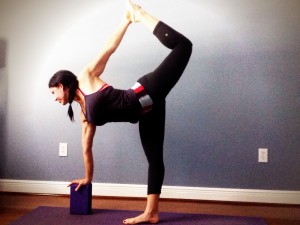 Just because you cannot make it into the studio doesn’t mean you have to skip out on your practice. The tips below will help you establish a practice available to you at home.
Just because you cannot make it into the studio doesn’t mean you have to skip out on your practice. The tips below will help you establish a practice available to you at home.
• Create a special place in your home for practice. If you have a separate room, use this space, if not, create a special corner in a room that is free from distraction that has energy within it that will support your sacred space. Set up a personal alter, a small place on a bookshelf will work, and place things on it that inspire you. This can be any pictures, teachers, or mentor/s in your life. Use candles, incense, mala beads and any other items that will provide inspiration and that you have gratitude towards. If your practice space allows you to face East, great, if not don’t get bogged down with details.
• If all you have is 10 minutes, this is better then none. Do what you can in the time that you have. Make time for your practice. Schedule it into your life, like you do with other meetings and appointments. It’s better to do a little practice daily, then a three-hour session once a week. It’s best to create routine by doing your practice the same time daily. It doesn’t have to be at any particular time. It’s better to find something that works for you and to become consistent and disciplined to your practice. Make sure to practice non-attachment and take rest from your asana practice at least once a week to give your body time to rest.
• Turn off phones and any device that may cause distraction. Procrastination leads to thinking which is the opposite of the goal of yoga. All of your ‘to do list’ can wait. Get on your mat and just begin with your breath. Those days that you feel unmotivated to get on your mat, ask yourself to do just one Sun Salute mindfully and then, do another and notice how, once you quiet your mind you’ll become more receptive to your practice.
• Ask your self how you are feeling? Be open to changing up your practice to accommodate your needs. If your feeling exhausted, then a Restorative Yoga or Yoga Nidra will be very helpful in rebalancing your energy. Other days, you could follow the Ashtanga format, beginning with Sun Salutes, standing postures, seated postures, backbends and inversions. You could design a sequence that leads up to the posture that you struggle with, allowing yourself to be playful and spontaneous. Just get on your mat and see where it goes and allow ample time at the end for rest. When your alone practicing, this will give you opportunity to play with postures and experiment with new ways to get into, and out of postures.
• Develop a silent sitting practice, in other words, a meditation practice. If five minutes is all you can commit to, start there and allow your meditation to grow longer over time. Add a minute per week till you get up to 20-30 minutes per sitting. Theoretically, we do all these yoga postures to prepare our bodies for sitting still in comfort. Sit however is most comfortable for you even if that means using a chair. Sit upright, with an elongated spine up to the crown of your head. If you have a pranayama practice, do this before, as this will help you to focus and set the internal environment for your meditation practice.
• At the beginning of your practice, take time for intention setting, dedication of offering your efforts up to God, someone or something. Try not to be attached to the outcome of your practice.











